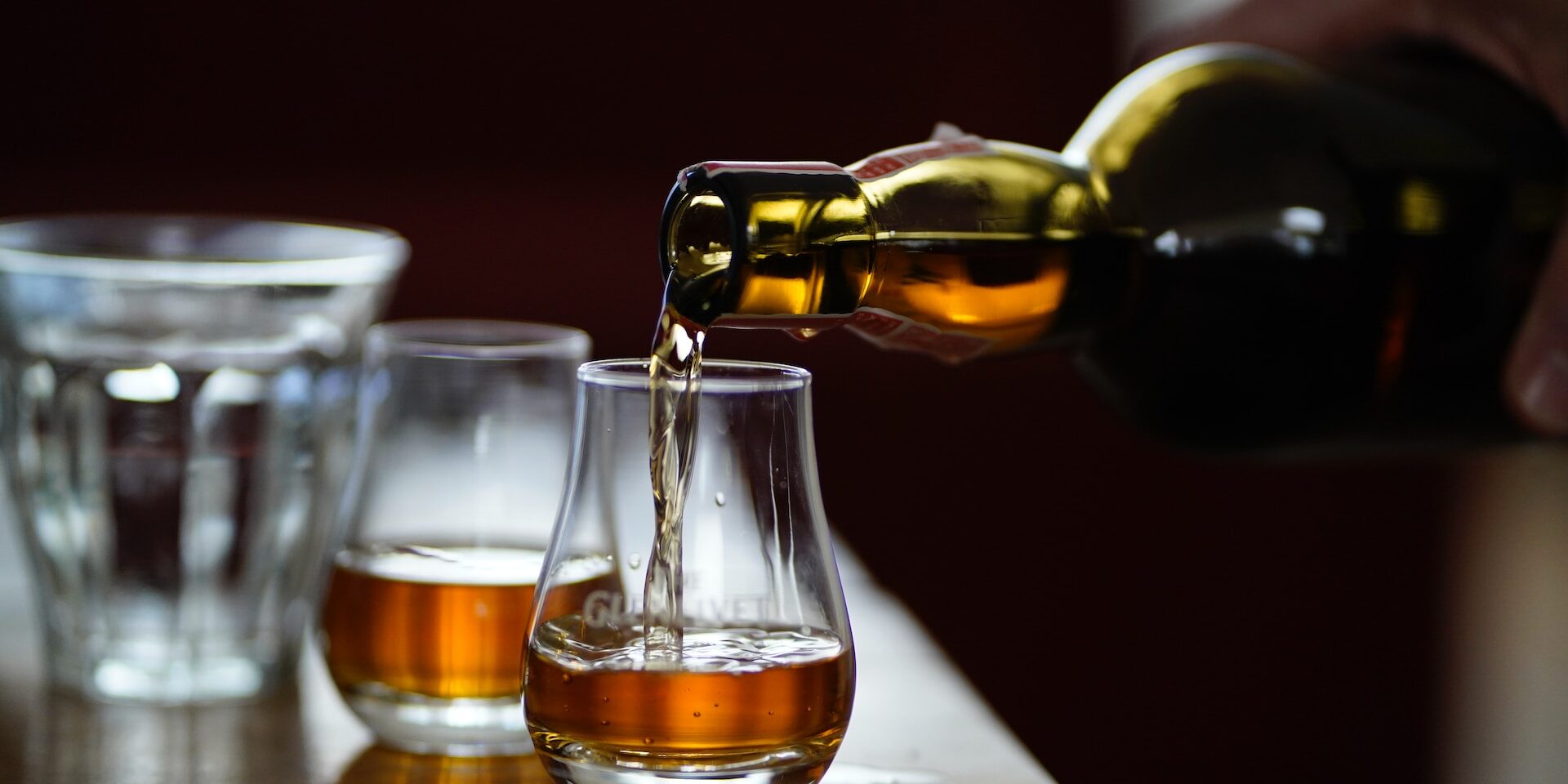While enjoying a glass of your favorite whisky, have you ever wondered about the differences between bourbon, Scotch, and whisky? These spirits may seem similar at first glance, but they each have unique characteristics that make them distinct.
Today, we’ll delve into the differences between whisky, bourbon, and Scotch, and explore how each of these spirits is produced, aged, and enjoyed. So let’s raise a glass and learn together!
Whisky: The Foundation
Before we dive into the differences between bourbon and Scotch (both of which are distinct categories in whisky), it’s essential to establish a baseline understanding of whisky as a whole. Whisky (or whiskey, depending on the region) is a distilled alcoholic beverage made from fermented grain mash. This mash includes barley, corn, rye, and wheat grains. The production process involves mashing, fermenting, distilling, and aging the spirit in wooden barrels, which imparts unique flavors and characteristics to the final product.
Now that we have a basic understanding of whisky, let’s delve into the nuances that separate bourbon and Scotch.
Bourbon: America’s Native Spirit
Bourbon is an American whiskey rooted in the southern United States, particularly Kentucky. Bourbon has some specific legal requirements that must be met for it to be classified as such:
- Production: Bourbon must be produced in the United States.
- Mash bill: The grain mash must be comprised of at least 51% corn.
- Aging: Bourbon must be aged in new, charred oak barrels. There is no minimum aging requirement for bourbon, but to be labeled as “straight” bourbon, it must be aged for a minimum of two years.
- Distillation: The spirit must be distilled at no more than 160 proof (80% alcohol by volume).
- Bottling: Bourbon must be bottled at a minimum of 80 proof (40% alcohol by volume) and cannot contain any added flavors or colors.
These regulations give bourbon its distinct flavor profile, typically including caramel, vanilla, and oak notes. The corn-heavy mash bill imparts a sweetness to the spirit, while the charred oak barrels give it a rich, smoky depth.
Scotch: A Taste of Scotland
Scotch whisky, often simply referred to as “Scotch,” hails from Scotland and is subject to its own set of rules and regulations:
- Production: Scotch must be produced in Scotland.
- Mash bill: The primary grain used in Scotch production is malted barley, but other grains may also be included.
- Distillation: Scotch must be distilled at a maximum of 190 proof (94.8% alcohol by volume).
- Aging: Scotch must be aged in oak barrels for a minimum of three years.
- Bottling: Scotch must be bottled at a minimum of 80 proof (40% alcohol by volume) and cannot contain any added flavors or colors.
There are two primary types of Scotch: Single Malt and Blended. Single Malt Scotch is made from 100% malted barley from a single distillery, while Blended Scotch combines single Malt and grain whiskies from multiple distilleries. Scotch is often characterized by its earthy, peaty flavors, which come from the use of peat in the malting process.
Conclusion
While whisky, bourbon, and Scotch may all share a common foundation, each spirit’s unique regulations and production processes result in distinct flavor profiles and characteristics. Bourbon, with its corn-heavy mash bill and charred oak aging, delivers a sweeter, smokier experience, while Scotch, with its malted barley and peat-infused flavors, offers a more earthy and complex taste. Regardless of your preference, exploring the world of whisky is a journey worth taking. Cheers!
925 Liquors provides an unparalleled range of beer, wine, and liquor, boasting one of the largest collections in the Maryland and Virginia region. If you are looking for a 24-hour liquor store, check us out and see what we have to offer you!







